Schneider Electric Track lights
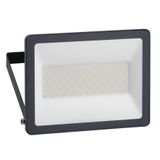

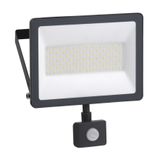
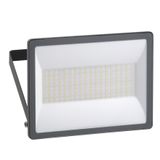
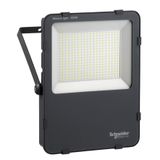

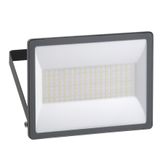


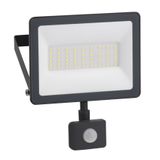

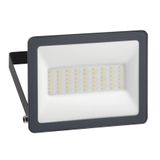
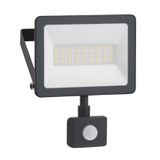



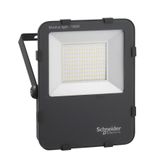
Schneider Track Lights optics, drivers, and adapters
Track-mounted spot families cover retail, hospitality, galleries, and agile office fit-outs where beams move with the merchandise plan. Bodies are die-cast aluminum with passive cooling; standard finishes white/black with RAL options for brand programs. Electricals target 220–240 V AC with PF ≥ 0.95, THD ≤ 10–15 % on pro drivers. Typical efficacy sits at 110–150 lm/W, with CRI ≥ 90 options (high-R9 for reds/skin tones) alongside the CRI 80 workhorses. CCT choices 2700/3000/3500/4000 K; tunable or dim-to-warm on selected lines. Adapters lock into 3-circuit tracks (16 A per phase) with mechanical anti-slide keys; through-feed joiners and feeds maintain polarity across corners and T-sections.
Product families, beam control, and accessories
Head sizes span ~30–120 mm, delivering 500–6000 lm per head to cover case lighting through to high-ceiling accents. Optics are field-swappable: narrow (10–15°), spot (20–25°), medium (30–36°), and wide (50–60°); specialized ellipses and wall-wash reflectors are available on the larger heads. Glare management includes black baffles, honeycomb louvres, snoots, and barn doors. Tilt typically ±90° with 350° pan, using indexed friction joints that hold aim during cleaning. IP20 is standard; selected enclosed heads reach IP54 for dustier sales floors.
Technical specifications and standards for project submittals
- Drivers: on/off, DALI-2, or 1–10 V; flicker-optimized outputs suit camera environments.
- Electrical endurance: surge 2 kV L–N / 4 kV L/N–PE typical when coordinated with board SPDs.
- Thermal: rated at Ta 25–35 °C; protect heat path on tracks under skylights or HVAC discharge.
- Compliance: IEC 60598-1/-2-1 (luminaires), IEC 60570 (track systems), IEC 62386 (DALI-2), LM-80/TM-21 for LED life claims.
- Photometry: IES/LDT files, UGR tables for low-glare office corridors.
Photometry that sells product and meets codes
Wall-wash optics deliver uniform vertical illuminance (Eᵥ) for perimeter shelves; narrow beams drive centre-beam candlepower (CBCP) for feature tables without raising ambient too much. In open offices, low-UGR lenses and medium beams prevent sparkle on screens. For brand colour accuracy, specify CRI 90 with strong R9; where white-point mood matters, pick 3000 K for hospitality and 4000 K for task-oriented zones.
Applications and layout patterns installers reuse
- Retail/galleries: perimeter wall-wash + narrow accents on hero items; medium beams on gondolas.
- Hospitality: dim-to-warm heads for lounges; tight beams to keep tabletops bright and ceilings quiet.
- Agile offices: medium beams on collaboration zones; low-UGR accessories along circulation.
- Pop-ups and exhibitions: quick re-aim with indexed pan/tilt; spare optics in the service kit.
In fast churn environments, planners often specify schneider rail mounted lighting so moves/adds reuse the same adapters, feeds, and mechanical language.
schneider commercial track systems wiring and load planning
Three live conductors plus neutral/PE allow up to three switched/dimmed circuits per physical run; emergency conductors are supported in designated profiles—check the data sheet for core allocation. Keep phase loading within 16 A per circuit and distribute drivers to avoid hotspotting the first segment. Respect polarity on L1/L2/L3 across joiners; label feeds at every change in direction. Mount offsets: 0.5–1.0 m from walls for wall-washers; 1.2–1.5 m grid in open areas to keep aiming angles shallow and shadows clean.
Integration with Schneider control, protection, and emergency
Tracks land cleanly on Acti9 protection tiers (RCBO per circuit recommended); DALI-2 drivers join room controllers and BMS dashboards already used for general lighting. Contactors handle timed zones; emergency heads plug into the same mechanical run with maintained/non-maintained packs. Board-level SPDs should match the driver’s surge rating to avoid nuisance failures when signage and HVAC share feeders.
Selection criteria for B2B engineers
- Beam and task: CBCP and beam angle per planogram vs ceiling height; wall-wash where verticals matter.
- Colour policy: CRI 80 back-of-house; CRI 90 with high R9 for retail and galleries; SDCM ≤ 3 across bays.
- Control path: DALI-2 for scenes/analytics; 1–10 V for simple zones; verify address counts on long runs.
- Thermal/ambient: check Ta at the track; avoid mounting under supply grilles; use IP54 heads for dusty aisles.
- Service model: field-swappable optics, common adapters, and stocked accessories—this is where schneider adjustable track luminaires keep MTTR low during seasonal resets.
Installation notes that prevent callbacks
Use continuous mechanical earth bonding across feeds and joiners; torque track fasteners to spec to stop buzz on hard ceilings. Keep feeder drops at support points; do not cantilever heavy heads off unsupported splices. For camera-rich stores, choose flicker-optimized drivers and document dimming curves. Label circuit allocation on the track to match the panel schedule; it pays back during re-merchandising.
Advantages of working with Bankoflamps
Bankoflamps ties pricing to your lighting schedule and shows real-time EU stock before you fix fit-out dates. Quotes typically land in about an hour. Ordering by EAN/MPN prevents variant drift; your portal tracks lead times, shipments, and provides downloadable price lists. Approved partners can use post-payment up to 30 days. We consolidate partials to cut freight and hold price-validity windows so phased fit-outs stay predictable. Our team cross-checks feeds, joiners, adapters, drivers, optics, and emergency options against your drawings so kits arrive complete—ready to hang.